An Analysis of a Struggling Watch Market, New and Secondary, for the First Half of 2024 (But it’s not all bad)
There are the numbers... and there is the mood. But it's not all negative though.
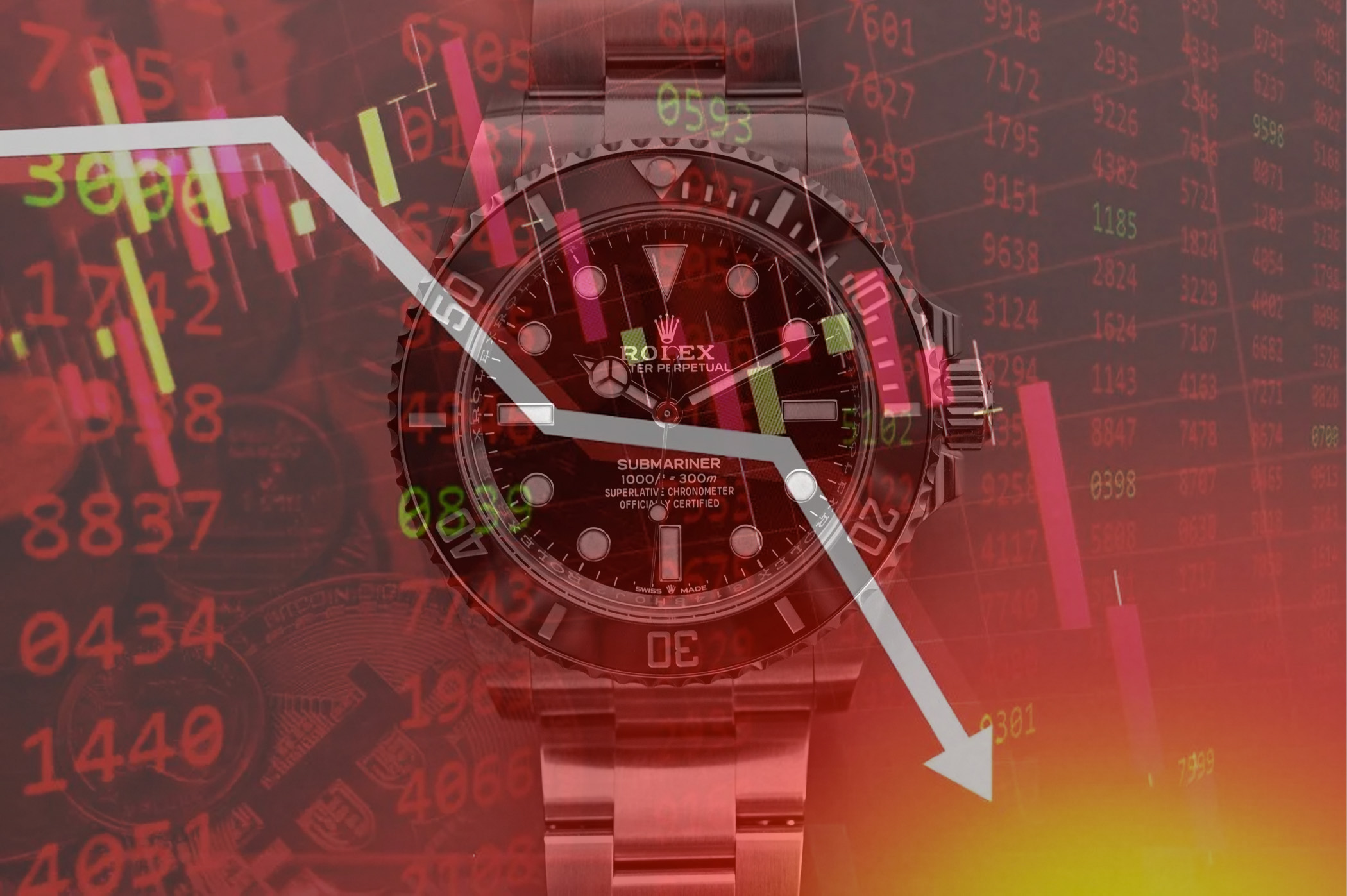
Following three consecutive record years for the watch industry in 2021, 2022 and 2023, recovering from a complex situation in 2020 due to the pandemic, the watch industry in 2024 is not sending the same positive signs. Pessimistic notes in brands and groups’ financial reports, contraction of prices on the secondary market, ambient morosity, increasing inventories, decreasing waitlists and reduced speculation (in all fairness, the last two might be a positive outcome)… This is what our ears are catching in the corridors of the watch industry. What is the situation for the first semester of 2024? Let’s have an overview using the latest reports and analytics we have in hand.
Preliminary note: the analysis of the new watch market is based on either the exports of the industry as reported by the Swiss Federation of the Watch Industry (FHS) or on a brand/group’s perspective, with numbers that take into account the so-called sell-in – sales from a brand to a distributor or a retailer – not the sell-out, which are the sales from a retailer to the final client. This article is based on reports from the FHS (exports), Morgan Stanley/WatchCharts (secondary market), Chrono24 index (secondary market) and several mid-year sales reports from listed groups.
A complex market for new watches, impacted by a significant decline in Asia
Let’s go back in time and have a look at the situation of the watch industry, starting in 2020. The entire world had to face an unprecedented situation, a global pandemic that put a halt to our lives. This, of course, had a strong effect on the economy and the watch industry, too, which is no stranger to the entire ecosystem. In 2020, exports dropped by 21.8% in value compared to 2019, to CHF 17 billion, below the 2011 level (the lowest point for the new decade), while the number of wristwatches exported dropped to 5,480,878 units (-33% compared to 2019). The situation was easy to understand, with many manufactures closed due to lockdowns, and shops not being able to open either – and deliveries were not following anyway.
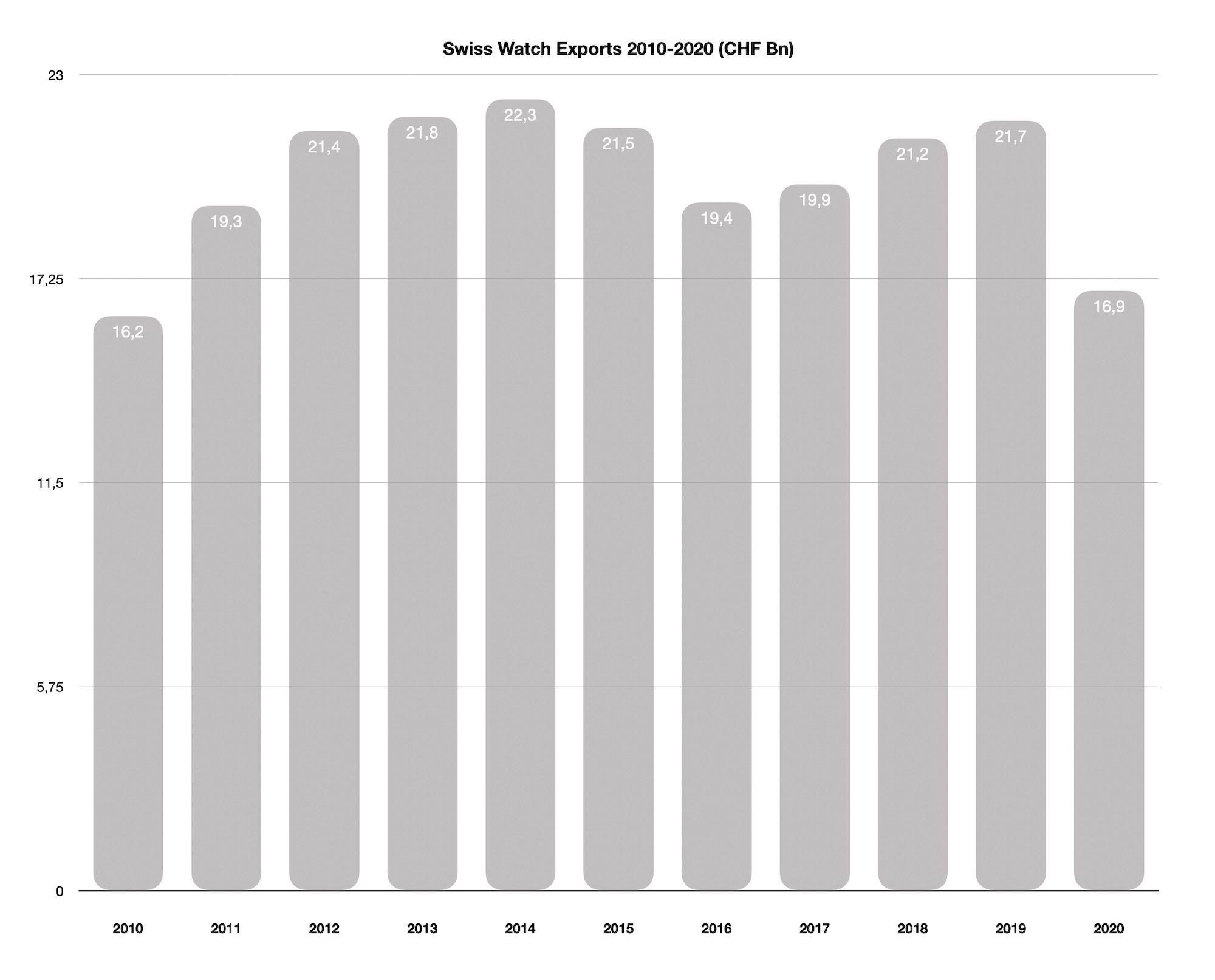
2021 saw an impressive rebound, with exports up 31.2% compared to 2020, even surpassing the previous record year of 2014 by a small margin. Conglomerates Richemont and Swatch Group unveiled results reflecting the recovery of the industry. However, a trend was slowly starting: that of a market mostly driven by higher-priced models (above 3K Swiss francs, export price), while the lower-priced Swiss timepieces were facing difficulties. 2022 was no different, again being a record year for the watch industry, with exports up by 11.9% compared to 2021. Yet, the number of mechanical watches exported was declining, from 6,346,000 units in 2021 to 6,014,000 units in 2022, indicating a rise in the average price of watches. This was fueled by two factors: a growing demand for high-luxury watches and general price inflation.

2023 marked, once again, an all-time record for the industry, with an increase of 7.6% in exports compared to 2022, reaching their highest level ever at CHF 26.7 billion. All three major groups (LVMH, Swatch and Richemont) showed record revenues and Rolex even became the first watch brand to break the CHF 10 billion barrier – at least, according to estimates from Morgan Stanley. However, most reports already showed a decline in sales at the end of the year 2023. The industry showed a rare rise in the number of mechanical units sold, however. In total, 2023 was a truly exceptional year, fueled by demand, increased interest in watches, speculation and probably the last signs of recovery from the COVID period. Exceptional is an important word here, as the situation was certainly not sustainable. The economy is based on cycles, and everything comes to an end.
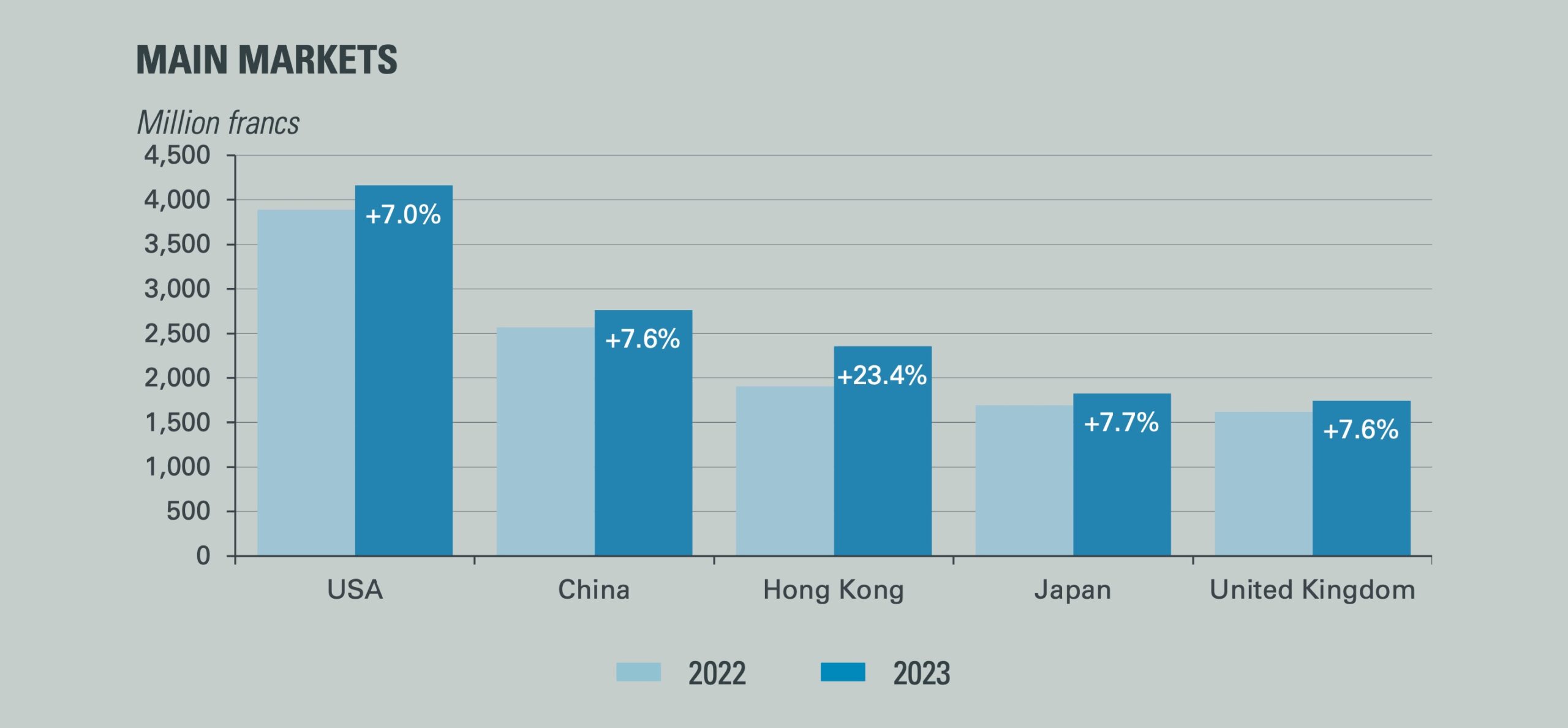
The last months of 2023 and the first months of 2024 showed a shift in exports and sales. Signs of a headwind were already visible with reports of changing trends coming in from multiple directions. The reality after six months in 2024 is that these rumours and expectations were right. What is the situation for the first semester of 2024? Let’s start by looking at the official statistics of the Federation of the Swiss Watch Industry (available at www.fhs.swiss). According to the report, “exports amounted to 2.3 billion francs, a fall of 7.2% compared with June 2023”. Following on the topic, the FHS reports that “six months into the year, the sector has shipped the equivalent of 12.9 billion francs abroad, representing a 3.3% reduction compared with the first half of last year”.
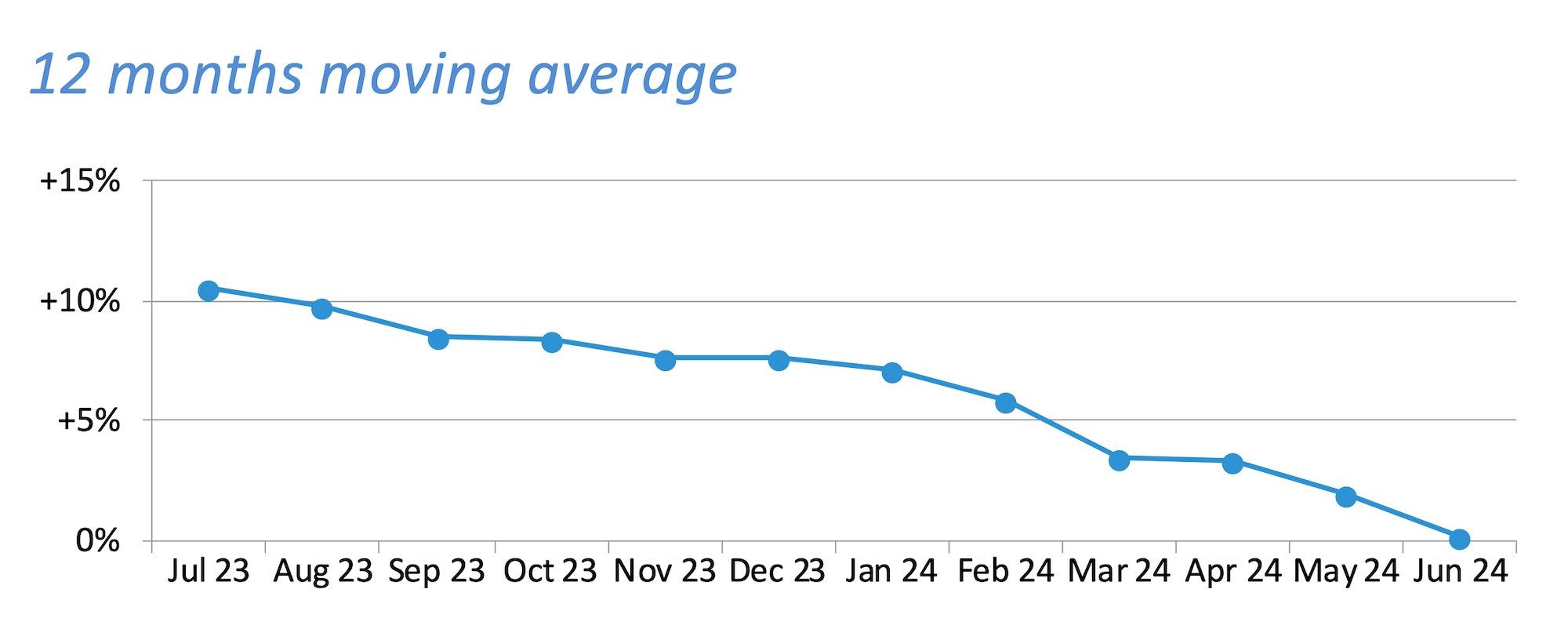
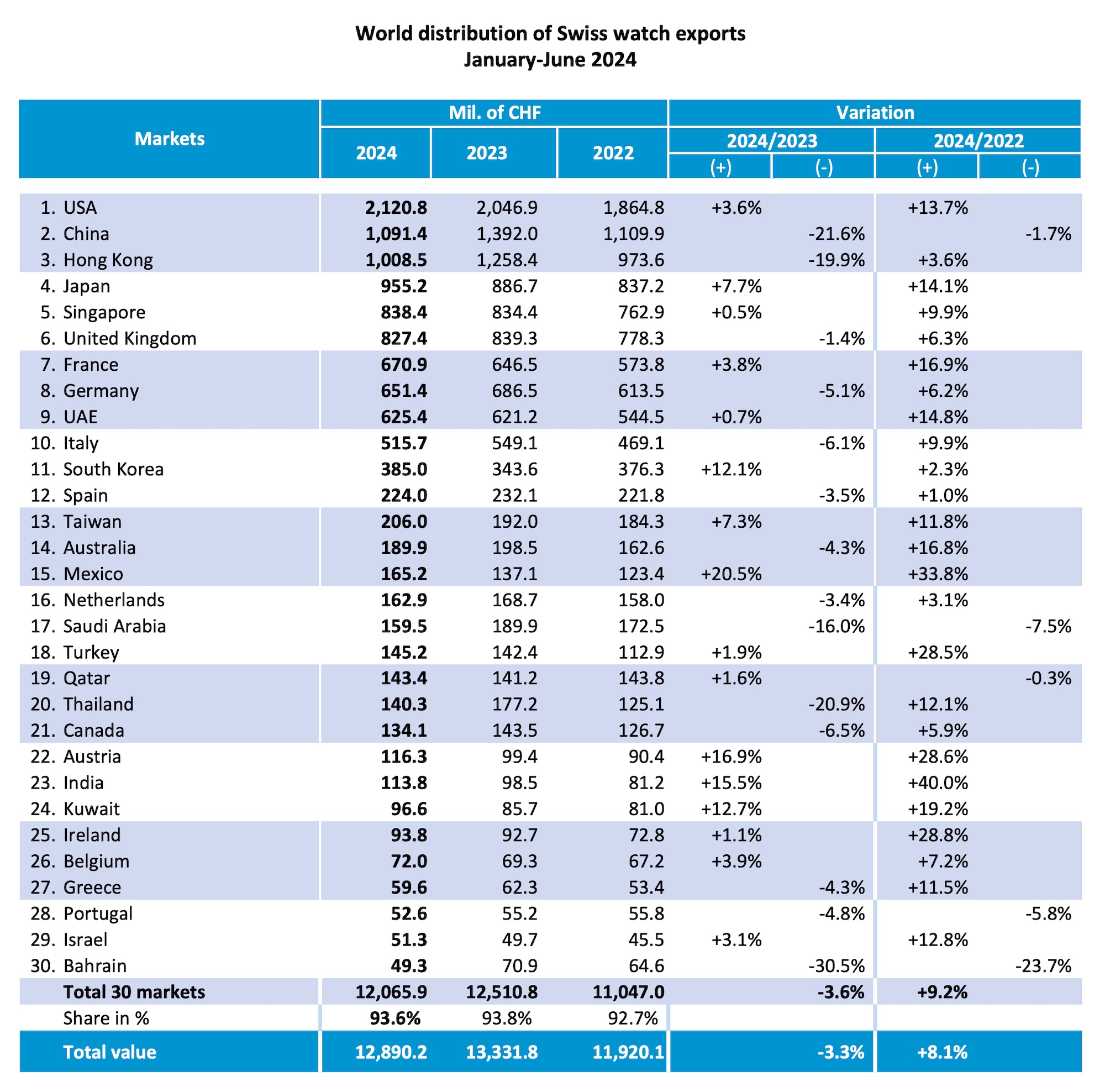
Looking closely at the situation, we can clearly see a slowing trend for exports, with decreasing demand. The FHS reports that the overall decline can be accounted for by steel watches, while precious metal watches remain stable. “Watches priced at over 3,000 francs (export price) held up well in the face of low demand and remained very close to the level achieved in June 2023 (-0.5%). Other price ranges fell significantly, particularly the 500-3,000 francs segment, which accounted for over 80% of the total decline.”
As for the regions, the decline in exports is mostly due to a much lower demand in Asia, particularly China (-21.6% compared to June 2023) and Hong Kong (-19.9% compared to June 2023). Saudi Arabia is also impacted by a 16% drop in exports. Elsewhere in Asia, Swiss watch exports faced significant falls, such as in Singapore, the United Arab Emirates and South Korea. The situation is partially compensated by a rise in exports in Japan, as foreign visitors take advantage of a weak yen. The USA continues to report growth while Europe as a whole remains relatively stable.

But if we look at the situation from a slightly older perspective, are these export figures so bad? Compared to 2022, which was a record year with unprecedented export levels, the watch industry in 2024 reports a growth of 8.1% for the first six months of the year. Indeed, 2024 numbers are not at their best, but we’re comparing them to 2023, which was an exceptional year – in the primary sense of the word.
What do the first-semester reports of watch groups and brands say? Recently, Swatch Group, owner of Longines, Omega, Breguet, Tissot, and multiple industrial sites, reported sales down 14.3% at constant exchange rates for the first semester of 2024. Notably, while its sales outside of China are at the level of the record year 2023 in local currencies, sales were mainly degraded in China (as indicated by the FHS on an industry level) due to weak local demand caused by economic uncertainties. The operating margin was also significantly impacted (-70% compared to the same period in 2023), with most of the decline visible, surprisingly, in the high luxury segment – and not in the mid-to-low segment, as indicated by the FHS report.
Richemont Group, the other Swiss giant, owner of Cartier, JLC, IWC and Vacheron, reported stable sales for the first quarter of 2024 ended 30 June 2024, with sales up 1% at constant exchange rates compared to the same period in 2023. That being said, a closer image of the Group reveals that the sales are supported by Jewellery brands (Cartier and VCA, mostly), while the watch division struggles with sales down 13%, with Japan’s performance only partially offsetting lower sales in Europe and Asia. Richemont notes the resilience of Vacheron Constantin and A. Lange & Söhne, two of its higher-priced brands – once again confirming the strength of the upper part of the industry.
At the time of publishing this article, LVMH has not yet published its mid-year report. For Q1, the French powerhouse reported sales down 2% compared to 2023, with -5% for the Watches & Jewelry division – without further details. Other major brands of the watch industry, such as Rolex, Patek Philippe, Audemars Piguet or Richard Mille (which form the top six of the industry with Cartier and Omega), don’t publish official financial reports as they are privately owned.
Inventories at their highest
An interesting indicator for the health of the industry, which isn’t often reported by brands or groups, concerns the level of inventories – (whether we’re talking about raw materials, work in progress, components, movements or finished products). That being said, publicly listed groups such as Swatch and Richemont have the obligation to disclose such data, giving us a first indication.

Richemont Group, for the year ended 31 March 2024, reported inventories of EUR 7,980 million, an increase of 12% compared to the previous exercise, and more specifically, EUR 2,166 million for the watch division – an increase of 8% – considering the Specialist Watchmakers generated EUR 3,767 million in sales for this yearly exercise.
The situation at Swatch Group is slightly different. We also have to consider that the group is both owner of brands and multiple industrial companies, and has always carried high levels of inventories over the years. For the first semester of 2024, the group inventories are up 5.5% at CHF 7,708 million. Sales of the group for the first semester were CHF 3,445 million, or by extrapolation, an equivalent of CHF 6,980 million for a year. As such, Swatch carries inventories corresponding to over a year of sales. More than the level of inventories, it’s the increasing level that seems problematic. The group indicates that “since May, inventories have stabilized, or have been reduced for raw materials and work in progress” and that “procurement of materials was adapted to the business trend”.
The Secondary market could not have bottomed out yet
Until now, we’ve looked at the state of the watch market through the scope of new watches supplied directly by brands and groups. Yet, we’ve long seen that the second-hand and vintage watch market represents an important part of the sales of watches in general. Even though hard to precisely quantify, the Boston Consulting Group published a report where estimated pre-owned watch sales reached USD 22 billion in 2021, USD 24 billion in 2022 (and most certainly about USD 25-26 billion in 2023), accounting for nearly one-third of the overall USD 75-80 billion estimated luxury watch market. According to the BCG, “the segment is growing faster than the firsthand market, and that trend is likely to continue.”
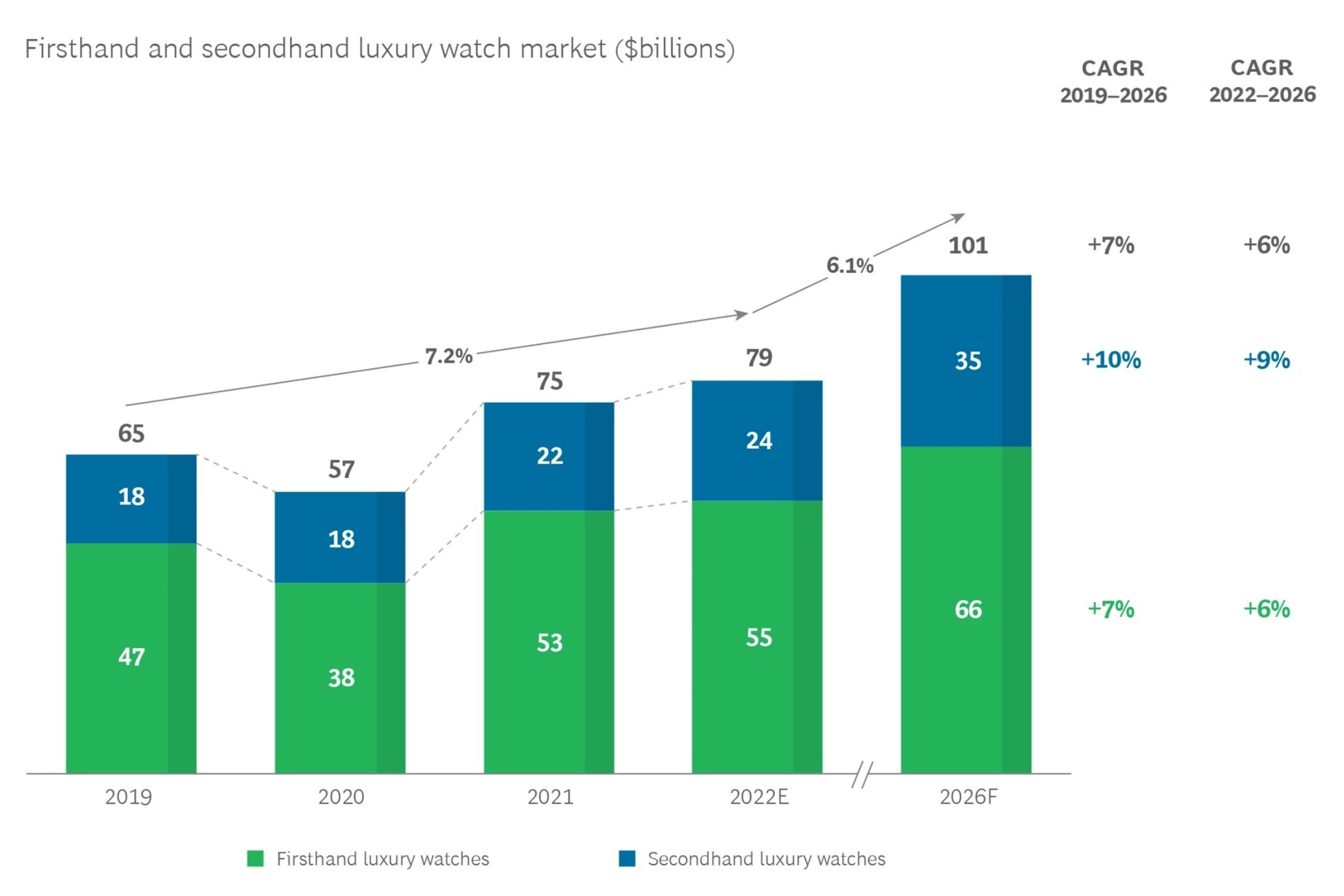
This portion of the market can’t be overlooked any longer and has even been considered directly by brands and large retailers now offering CPO (certified pre-owned) programmes. Recent developments show the interest of the watch industry in the secondary market, such as Rolex and its official Certified Pre-Owned Program launched in 2022. According to WatchCharts, the “total Rolex CPO inventory value exceeds USD 100 million as the program continues to expand”, and “at least 20 new authorized retailers (entered) the Rolex CPO program since April 2024”.
Despite brands’ growing interest in pre-owned watches and the increasing share of used models in the watch market, the situation here isn’t much different from that of new watches. Organisations such as Chrono24—with the ChronoPulse index—and WatchCharts—with the WatchCharts Overall Market Index—have created several reliable indexes and tools to help keep track of the health of this portion of the watch market.


Clearly visible from the two graphs above, the secondary watch market isn’t in its best shape, and prices of second-hand watches have decreased – WatchCharts reports nine quarters in a row of declining prices. Their index has lost about 3.5% since January 2024 and these analysts indicate that the performance even worsened in the second quarter of 2024. The ChronoPulse index shows a slightly different perspective, with average prices going slightly up in June-July 2024 before stabilizing.
As such, the main question is when the second-hand watch market will bottom out. Indeed, since it reached its maximum in February-March 2022, the market hasn’t stopped declining, with the average price of watches decreasing continuously ever since. For some years, the secondary market has been partially driven by speculators and investors, who saw potential ROI on hard-to-access watches.
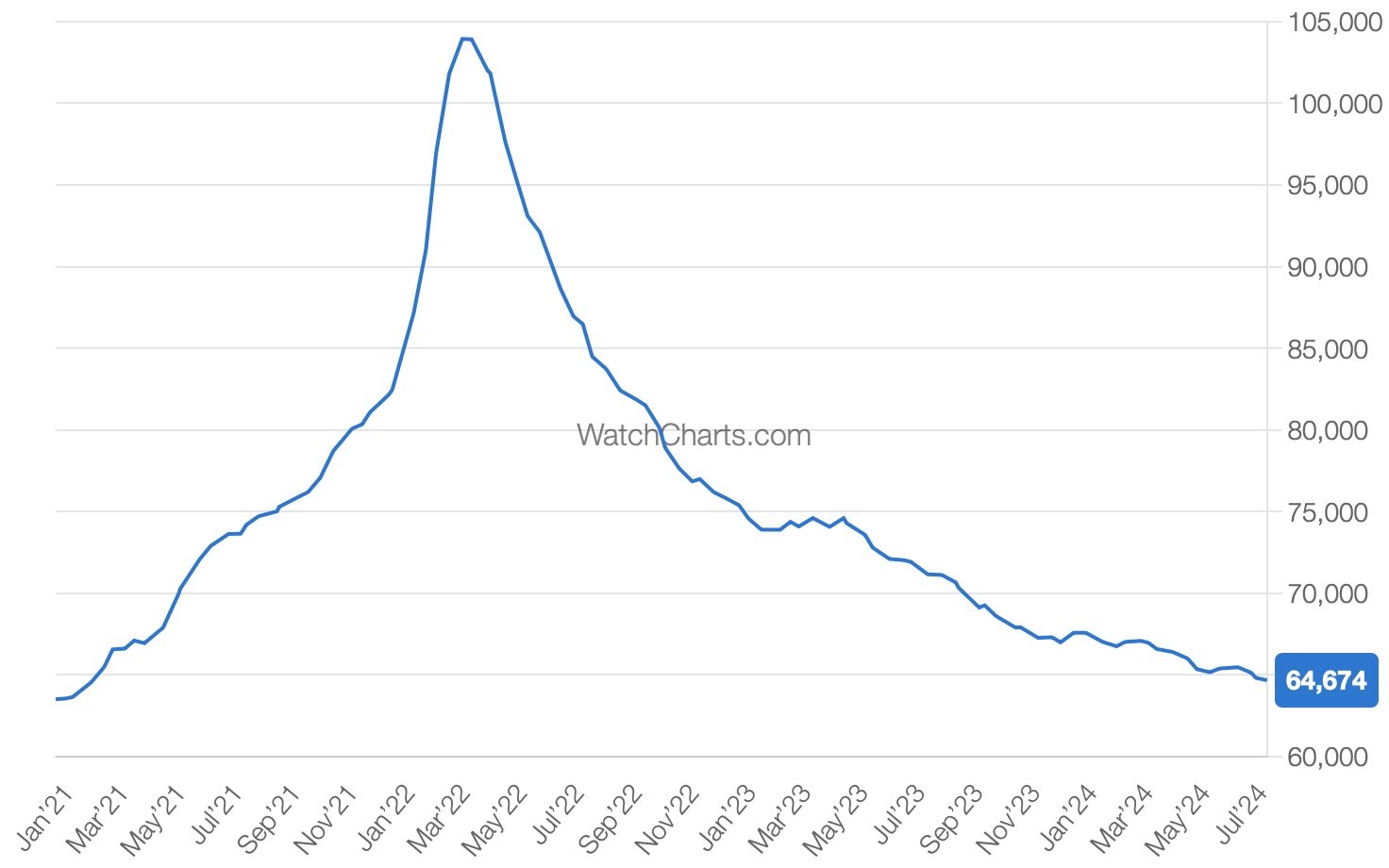
With this statement in mind, the watch market has become potentially affected by the same risks as any classic financial market, with cycles, volatility and corrections of the prices after major speculative bubbles. On this topic, WatchCharts reports that market speculation (specifically for Rolex watches) could be abating. The analysts “have seen a notable decrease in the amount of grey market Rolex inventory being listed since the beginning of the year”. With speculators going out of this market, the prices of second-hand watches could return to their normal value soon – in short, where we were used to seeing them before the pandemic. While still decreasing, the average prices, according to the WatchChart and ChronoPulse indexes, are slowly flattening.
Has the secondary market bottomed out? Maybe not yet, but possibly soon.
Easier access to high-demand models?
One possible reason for this decline in prices in the secondary market is the improvement in waiting times for high-demand watches. It is widely known that some specific models or most of the catalogues of certain brands (Rolex, AP, RM, Patek) are nearly impossible to get from retailers without a long waiting time, credentials and buying history.
However, for a few months now, the situation seems to have eased ever so slightly and waiting lists have shortened – not for all of these high-demand watches, of course (don’t expect to have a Royal Oak 16202ST or a steel Daytona delivered to you at retail price within a few weeks). Nevertheless, there are some clear indicators of improvement, such as the AD Wait Time Megathread on Reddit or WatchCharts’ evolution of Rolex dealer waiting times.
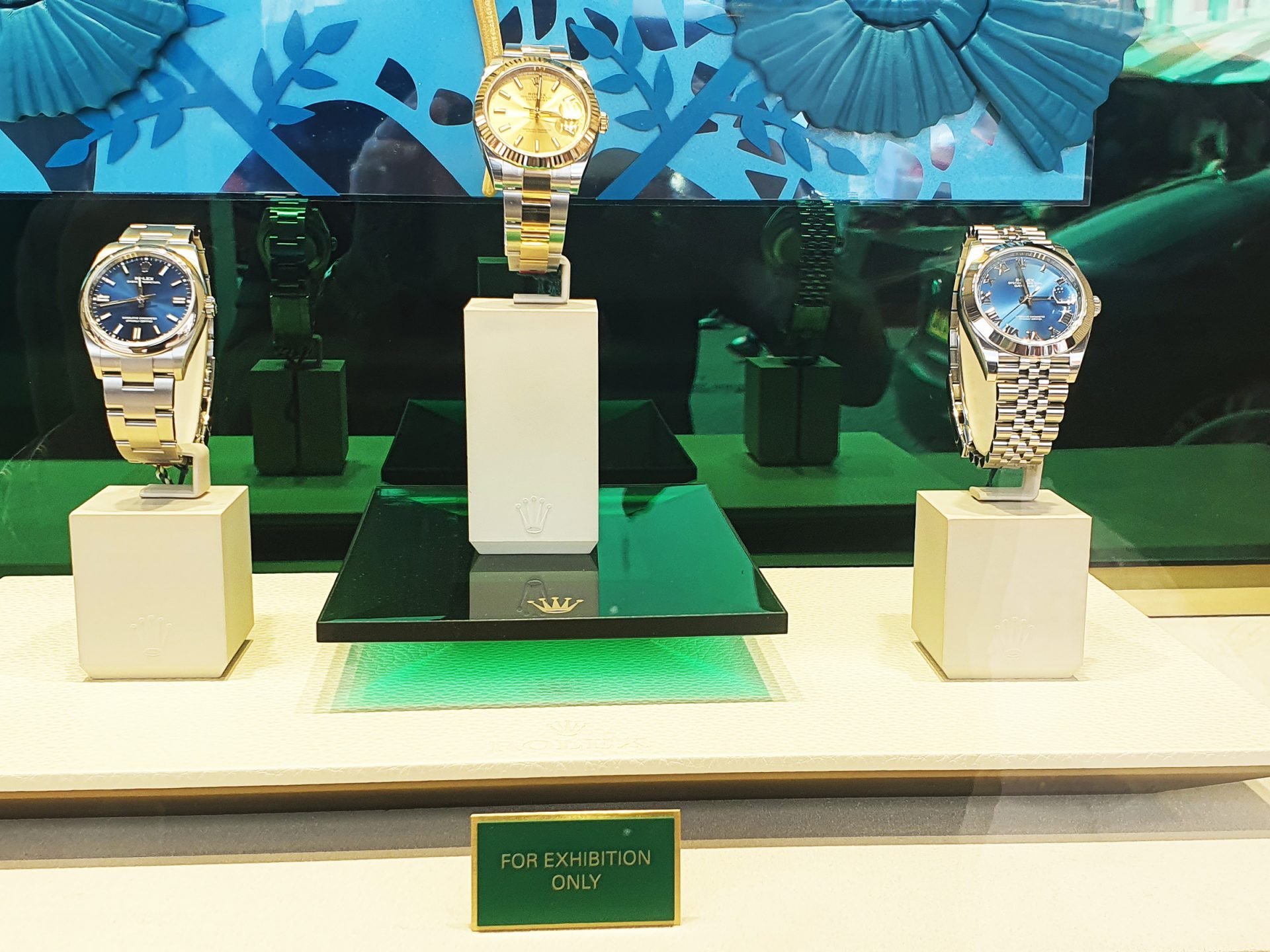
Focusing on Rolex sports watch collections (excl. Daytona), the report indicates that “the Submariner, GMT-Master II, and Explorer collections all saw an improvement in waiting times so far this year, compared to 2023. (…) and the GMT-Master II and Explorer waiting times appear to have trended down since 2022”. Average waiting times for a Rolex GMT-Master II would have, according to WatchCharts, reduced by half, from 180 days in 2022 to 90 days in 2024. While we’re still not entirely convinced that entering a Rolex dealer today would get you a steel Submariner in late September, the situation is indeed better than it was, with evidence of walk-in purchases being more and more possible on certain Rolex models – still less likely on a steel professional model.
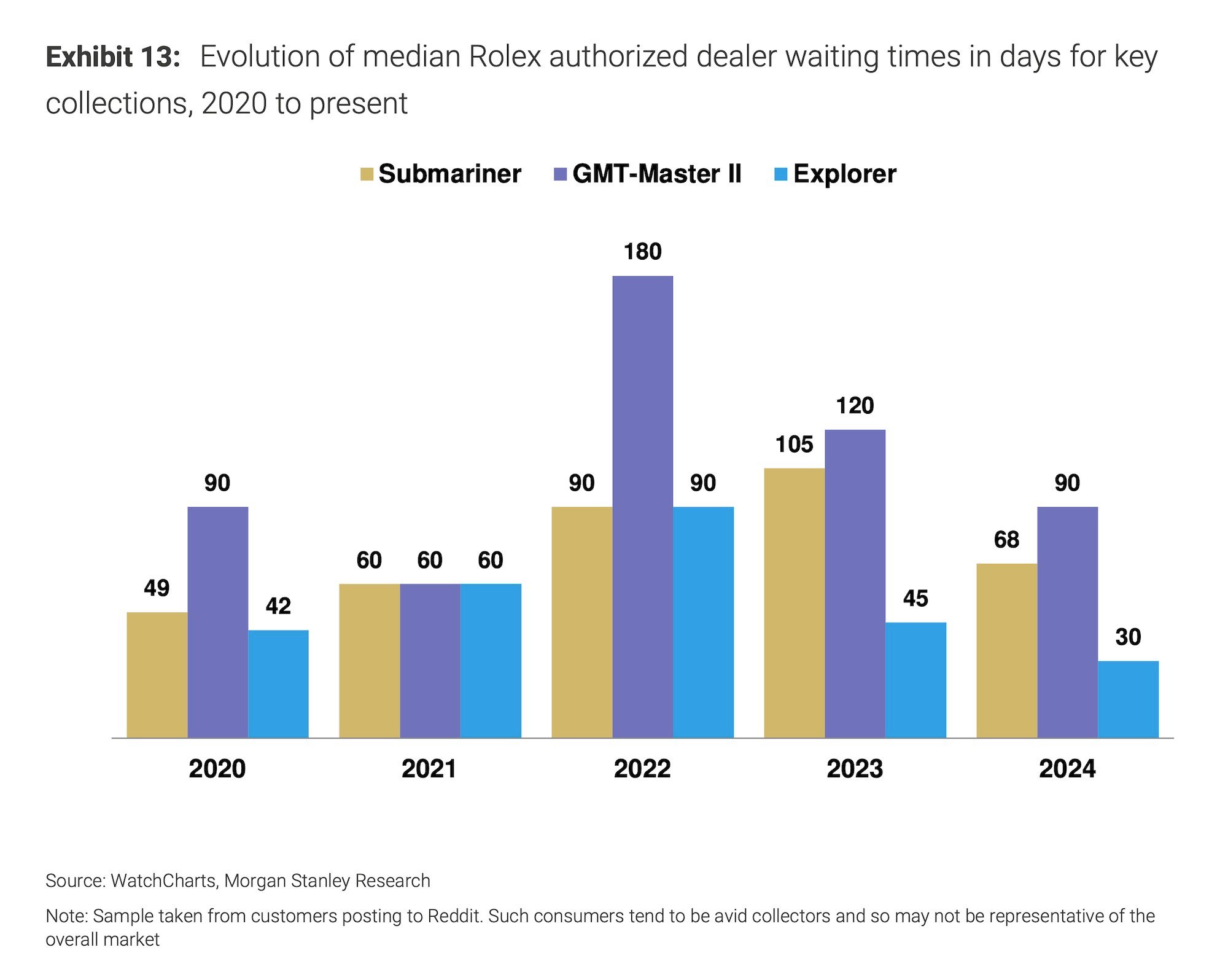
Is it that bad?
Aside from what you’ve just read, there’s something else to add to this analysis, something that’s not factual and that can’t be measured by numbers: the current mood of the industry. As members of the MONOCHROME team, we spend a lot of time in contact with brand representatives, and we can gauge that the mood and the atmosphere aren’t particularly positive. We hear insiders explaining that the market is difficult, sales are lower than before, inventories are getting higher than what was common in the past two to three years, and rotation periods at retailers are getting longer.
Is the situation that bad? Well, it all depends on the point of view: industry insider or watch enthusiast. As a leader or a top manager of a brand, I can understand that, following three years of exceptionally good business (each new year breaking the record of the previous one), seeing the market going down must be frightening. The period of excitement and prolific business we’ve known encouraged brands to develop their capacities – industrial, commercial and, of course, human – meaning that investments have been made. And these assets need to be profitable for the company.
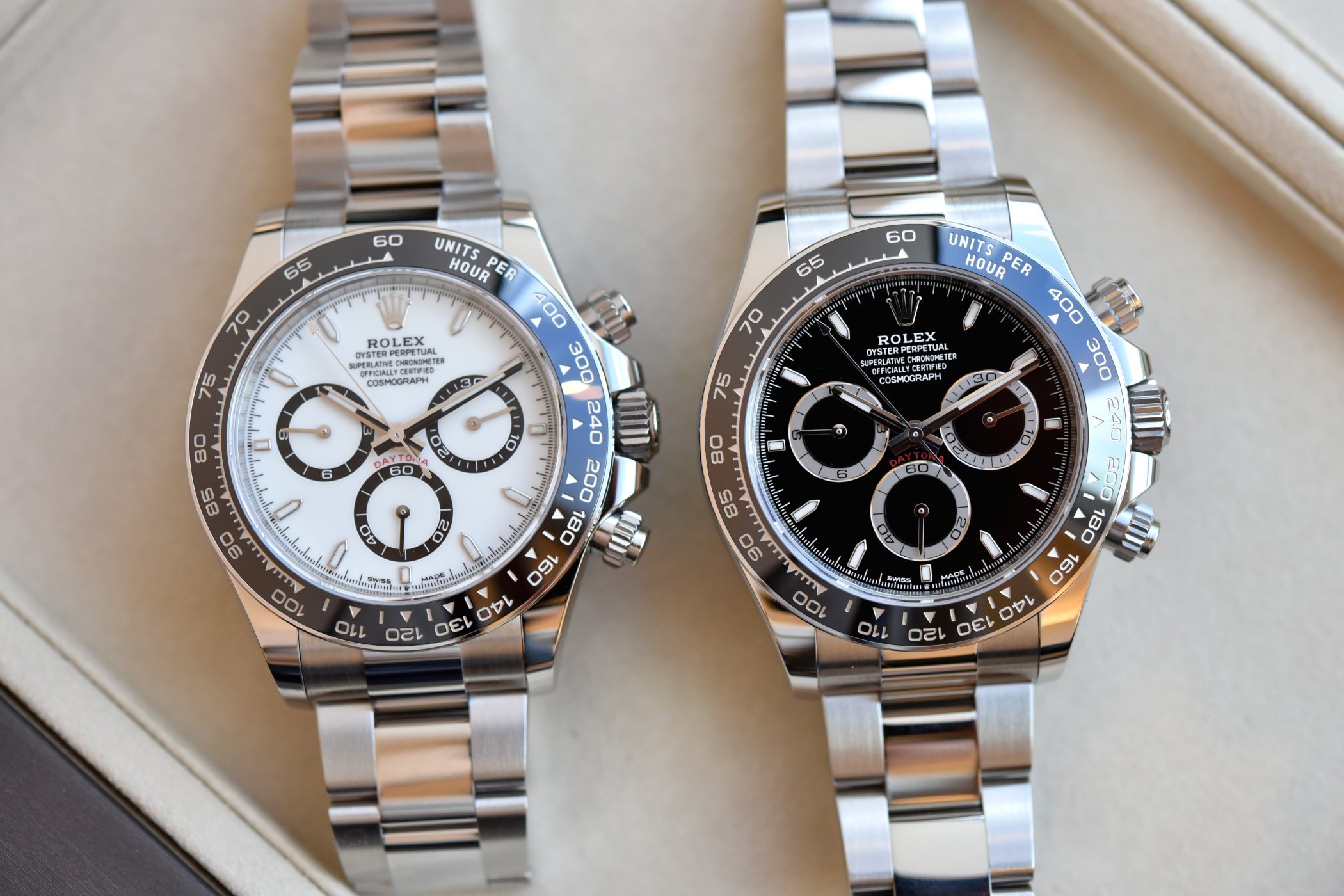
Also, for the past three to four years, we’ve come to expect not to find watches readily available in stock, to see limited editions sold within minutes, to have to show credentials to be able to be on a waiting list. Brands discovered a new business model that was highly profitable for them and which benefited the entire ecosystem – brands, groups, suppliers, retailers, second-hand dealers… Yet, this business model, which took shape during the pandemic, is not the norm and wasn’t meant to last. We’ve become used to a seller’s market, and such a situation has rarely proven sustainable.
So, from a brand’s perspective, through the eyes of the industry, is it that bad? Well, yes and no. Looking at the numbers, we can see that business is slow, but it’s not plunging either. Sales and exports are lower than last year but still higher than in 2022, which was, as far as I know, not really a bad year. The situation is, for now, mostly impacted by the economy in China, with the USA and Europe remaining quite strong – stable or in progress. The fears regarding inflation or conflicts affecting sales were not entirely justified after all, and the impact for the first semester was minimal. However, the image we’re looking at is macro (some brands struggle more than others), slightly biased, or at least delayed. Sales could be lower in the second half of 2024 and the year could end up worse than what we can see now. I don’t have a crystal ball, but the current mood is an indication of the future. Add to this mix the real estate crisis in China, and despite measures from the local government, there are no tangible signs of a positive outcome to the decreasing market in Asia, at least not this year.

But let’s look at this situation from a different angle, through the eyes of a watch enthusiast. And it becomes far more interesting now to be a watch collector – not a watch investor, just a person who enjoys, wears and keeps watches. Why? Because we’re back in a buyer’s market, with watches becoming more easily available from brands and retailers, and with prices that will, at some point and on some references, be negotiable. Isn’t it normal, after all, to enter a watch boutique and be able to buy the watch you’ve saved up for? Or at least, if it’s not available as part of the inventory, ordering it and getting it a few weeks later? It’s been like this for years or decades, this was the norm before the pandemic changed the world (but only temporarily).
Surely, some brands and some specific references will always be difficult to acquire, but for most of the market, it seems normal to return to a buyer’s market – at the expense of brands. I’m sorry for them, but most watch companies have decades of track record and have survived far more complex situations than the current one. The economy is cyclical; the wind has turned. It happened in the past; it’ll happen again.
The other aspect of this market to be considered, as a watch enthusiast (and once again, not a watch speculator/investor), is the return to normal for most second-hand watches. Prices are down and now might be the time to treat yourself, to enjoy some neo-vintage and youngtimer watches at fair prices. All in all, I’d say it is not a bad moment to be a watch enthusiast… As always, it all depends on the perspective.

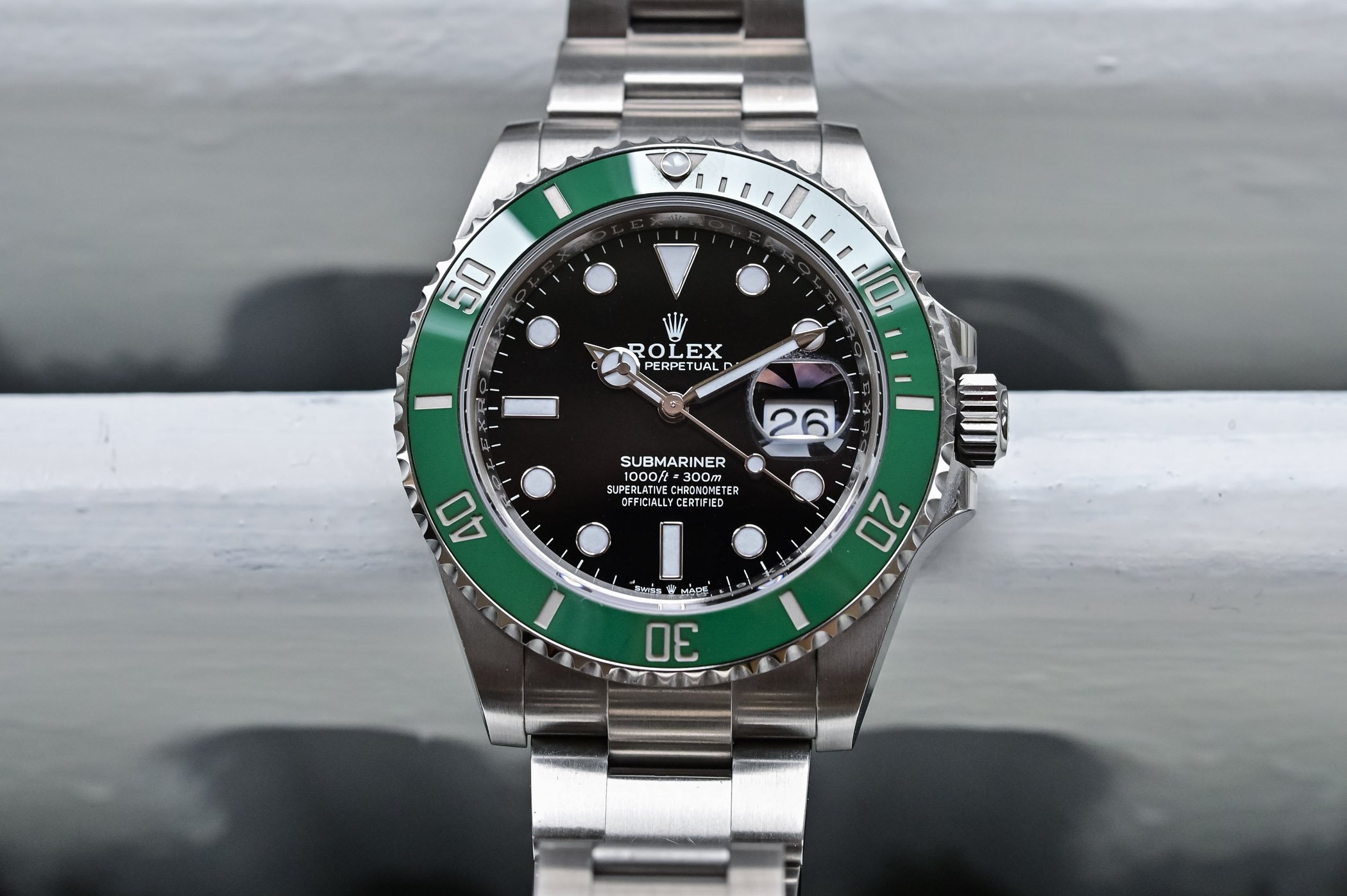
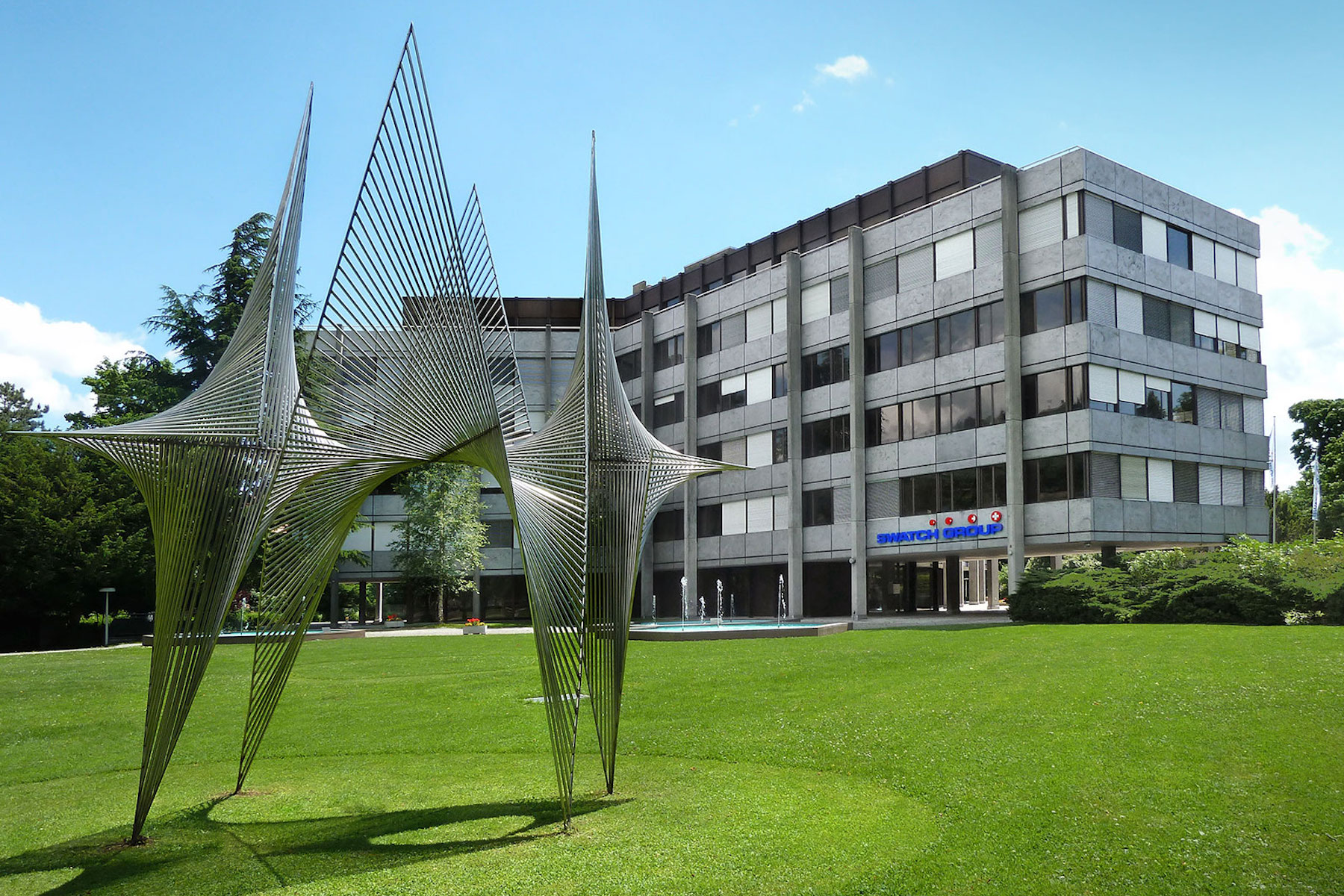
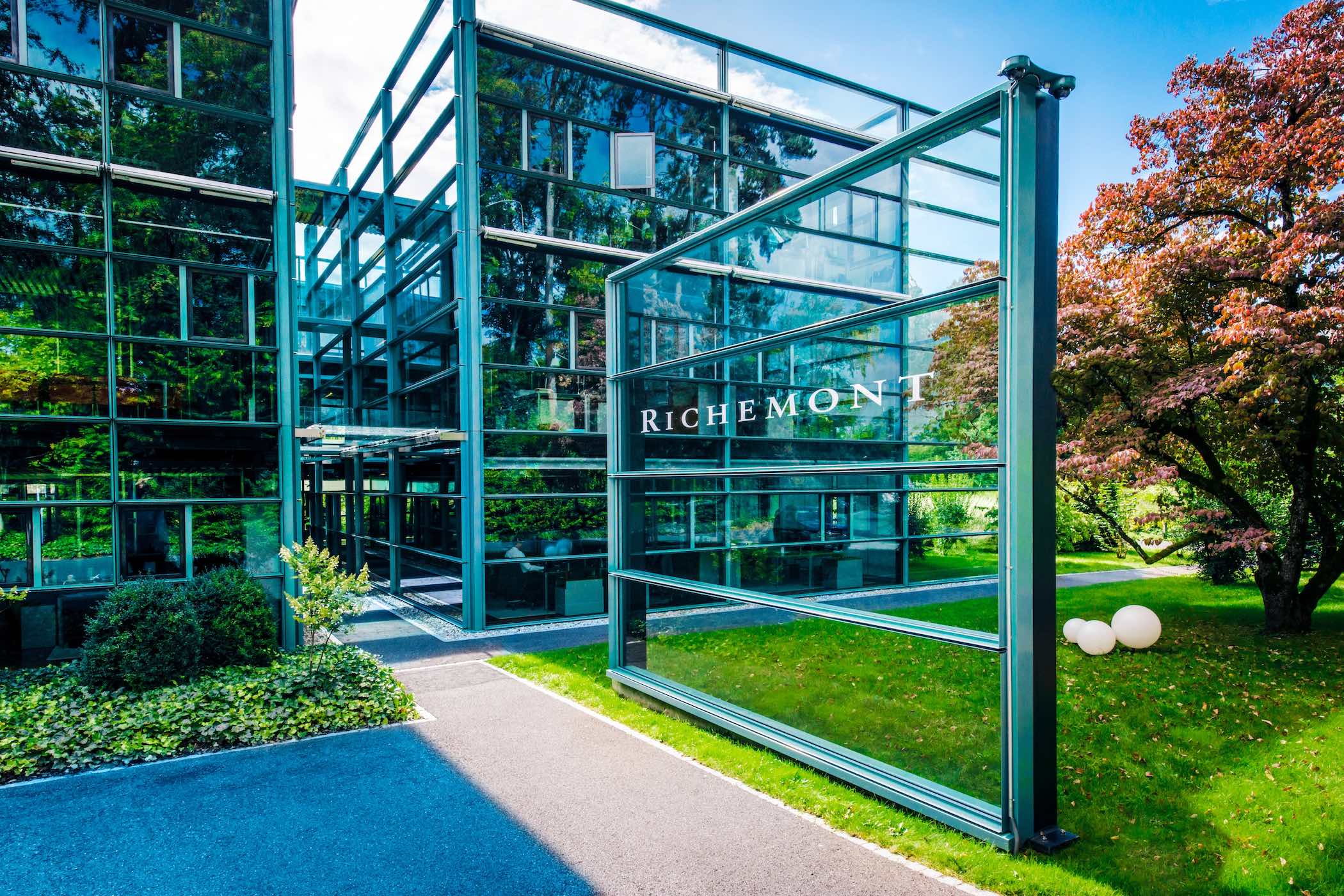





6 responses
In all fairness, to these eyes, the last SIX ARE a positive outcome!
Kudos to Brice and Monochrome. This is one of the most comprehensive and complete market analysis that I have personally read in a long time! Amazing read! I became optimistic again that I’ll be able to get my grail watch soon I hope.
Really interesting article. It reflects those of us who collect and watch the industry closely are experiencing. It does feel that pre owned steel Rolexes have been hit quite hard. Perhaps a result of over speculation and its swift decline and a glut of product on the secondary market along with the financial strength in some economies and demographics impacting demand and a sell off to afford higher mortgages etc?
Inventory management has become a challenge that many have not experienced. They’ve only experienced growth and are now seeing a ‘rapid’ decline. Some appear to be panicking and as you mentioned now could be a good time to buy some favourites. Omega moon watches look like good value right niw along with Tudor products.
Keep up the good work and happy collecting to everyone.
Watch inflation has been so bad that for most “Luxury” brands (Rolex Omega etc) I’m not prepared to spend what they are asking for a watch.
When looking at the vintage market you really need to separate the overly hyped, overpriced brands from the rest. While these have gone massively up and down, the sorts of watches that most enthusiasts collect in the sub-£3000 bracket have been far more subtly affected (often with prices simply remaining stagnant).
I hope the market value of watches from brands like Rolex, pp, ap, rm… will decrease to the original value or decrease below the original value.